

Module 5: Thrust
You’re about to become an expert on Newton’s final law of motion, how rockets get into space and what this has to do with thrust. Then, you’ll put your rocket prototypes to the test by performing your second test launch.
Newton’s third law
For every action there is an equal and opposite reaction

Video transcript: Newton's third law
You can test this law in action with balloons. In your crew, blow up and release some balloons – whose balloon will go the furthest?
What does this have to do with thrust?
Remember, thrust is one of our forces of flight. It works in opposition to drag and weight to push your rocket into the air.
In real-life rockets, thrust is created by the rocket’s propulsion system (the engine) which launches the rocket into space.
In your rockets, it looks more like this…
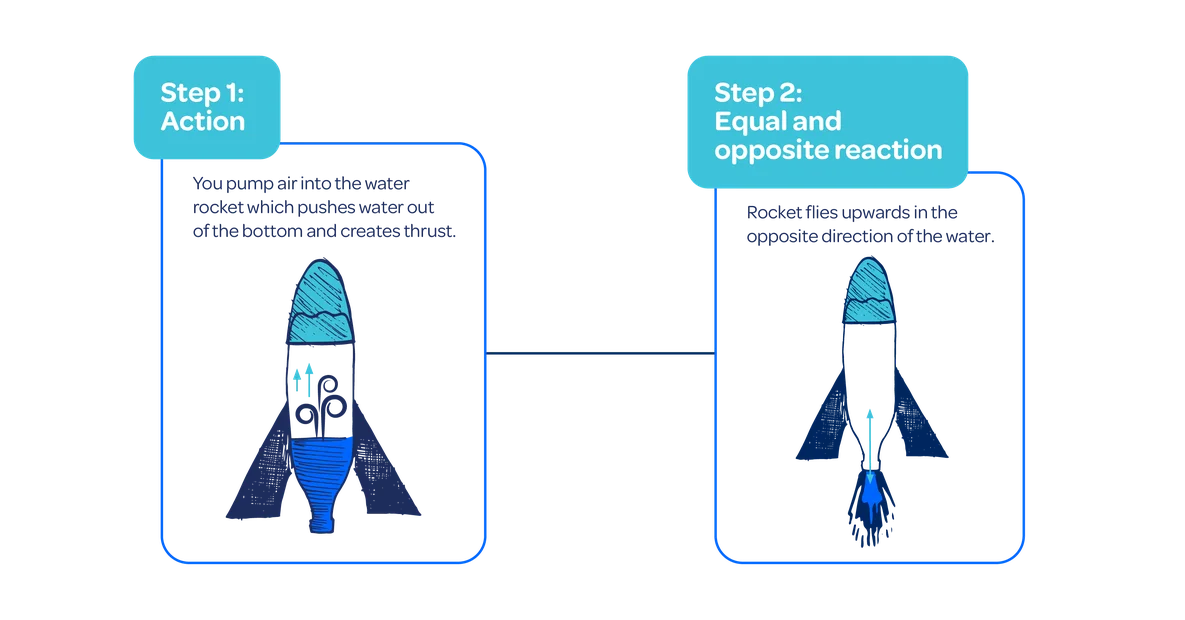
Mission Brief 9: Fact card frenzy!
Now that you’ve learnt all of Newton’s laws, you’re almost expert rocketeers. Show off your Rocket Challenge knowledge by creating some handy fact cards to test your crew’s smarts.
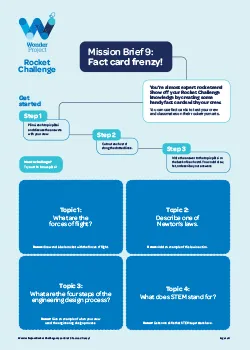
Ngā tohutohu mō te Whāinga 9: Ngā kāri meka
Kua mātanga tonu koutou ki ngā mahi tākirirangi i tō mōhio ki ngā ture katoa a Niutana. Whakaaturia mai ō mātauranga ki te Wero Tākirirangi mā te hanga i ētahi kāri meka e whaitake ana hei whakamātau i ngā mōhiotanga o tō rōpū.
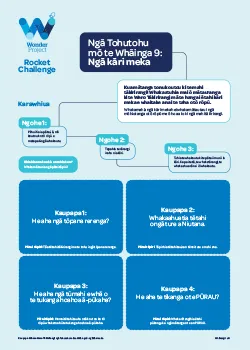
Prepare for launch!
Let’s send your rocket prototypes on their first mission! When STEM superstars make a rocket prototype, they test it thoroughly to figure out which parts of the rocket work well, and which parts need to be improved.
Your focus for this launch will be to test each crew’s rocket and collect data on how their fins affect their flight. Then, use this data to identify ways you could improve your rocket’s design.
Rocket aerodynamic design variables
To start, let’s recap the key things to think about when it comes to aerodynamic rocket fins. They are:
- Shape
- Size
- Number
- Materials
Make sure you observe how each of these things impact each crew’s rocket flight. Your observations can help you evaluate how your prototype performed and what could be improved.
Before you head out to the launchpad, don’t forget to:
- Revise the health and safety rules
- Remind yourself of your crew role
- Assign someone to video your test flights to help with data analysis
- Bring a copy of Mission Brief 10 and a pen to collect flight data!
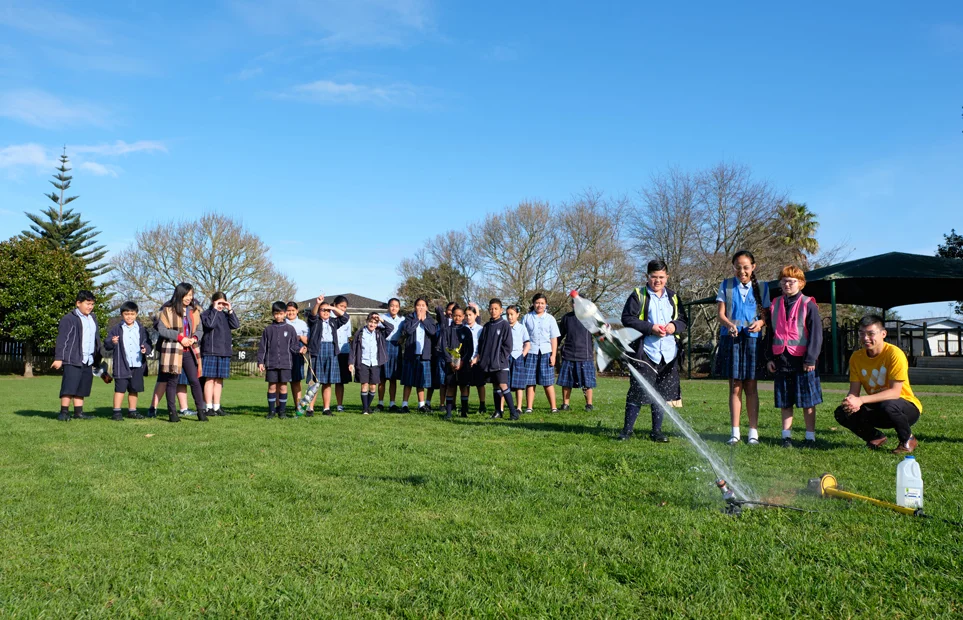
Mission Brief 10: Prototype test flights
In your second round of test flights, observe how each rocket’s fins affect their flight so you can identify areas for improvement. You’ll need all members of your crew on board to prepare for launch, remember to record results and video each launch performance.
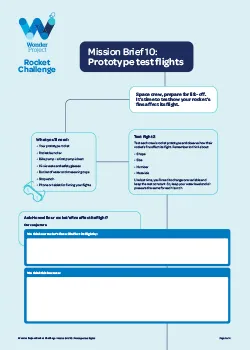
Ngā tohutohu mō te Whāinga 10:
Ngā rerenga whakamātautau tauira whakamātau
I te tuaruatanga o ngā rerenga whakamātau, mātaihia te pānga o ngā pakihau o ia tākirirangi ki tōna rerenga kia tautohu ai koe i ngā wāhi hei whakapaitanga ake. Me mahi tahi ngā tāngata katoa o te rōpū i te whakarewanga. Tēnā, tuhia ngā putanga, ā, whakaahuatia hoki ngā whakarewanga katoa.
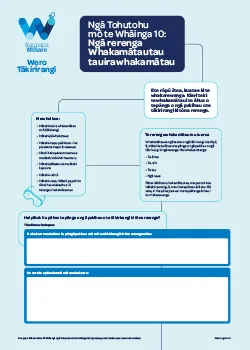
Extra time to spare? You can plot your rocket’s trajectory to give you even more data on how to improve your prototype!
Trajectory is the actual or expected path your rocket follows as it moves through the sky.
Use one of the videos you took of your prototype to complete this optional activity:
Update your sticker chart!
Have you completed all the Mission Briefs for this module? Don’t forget to put a sticker on your chart!
Module 5 checklist
- Watched: Newton's third law
- Learned about thrust
- Completed Mission Brief 9: Fact cart frenzy!
- Completed Mission Brief 10: Prototype test flights
Optional – Measuring trajectory activity
Ready for the next step?